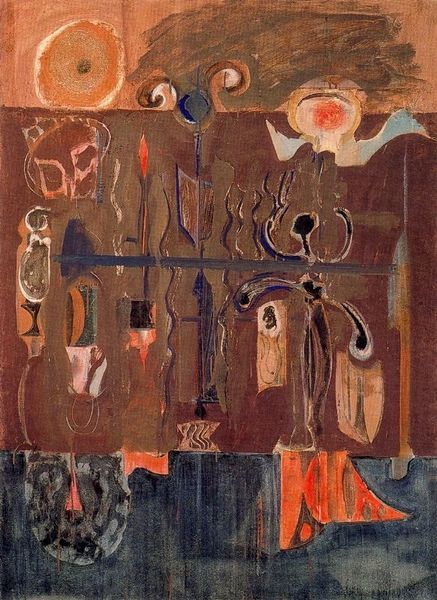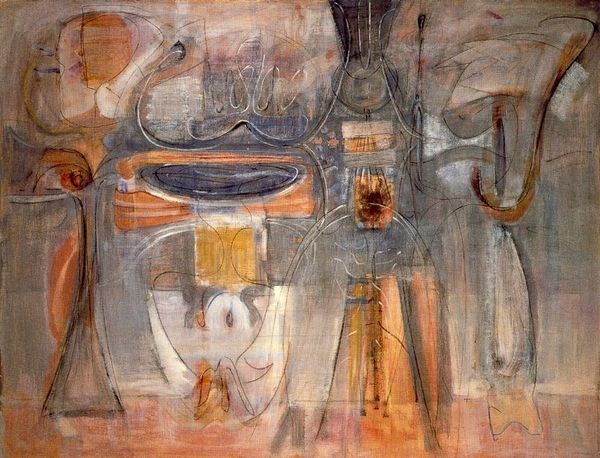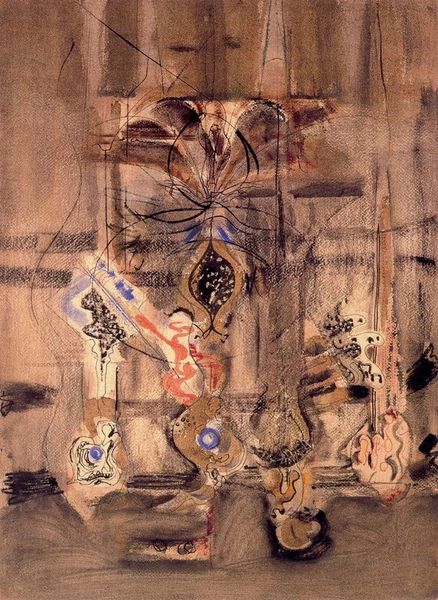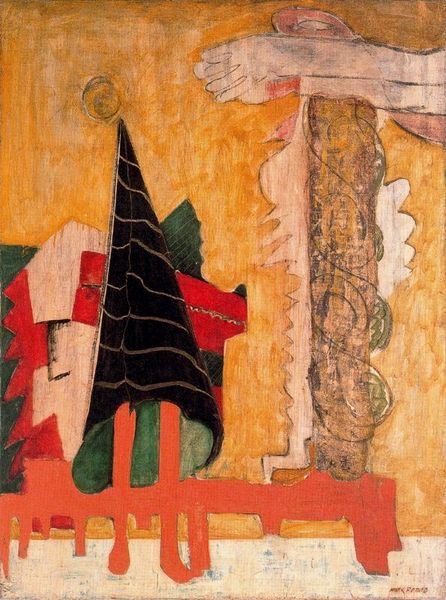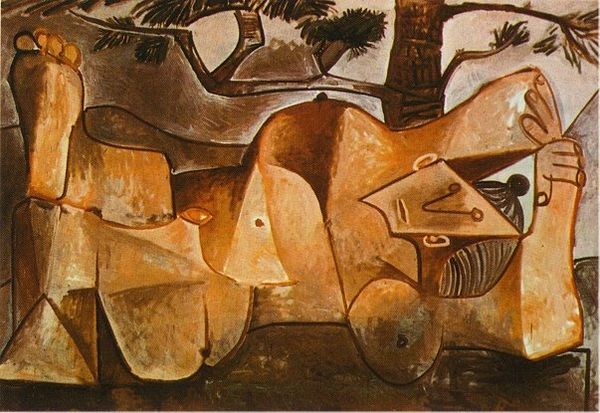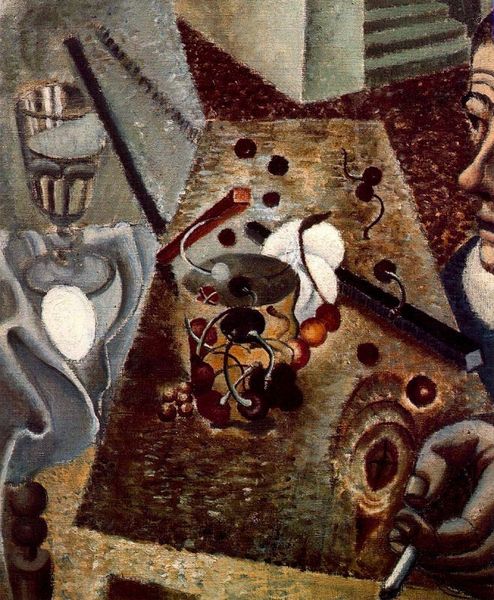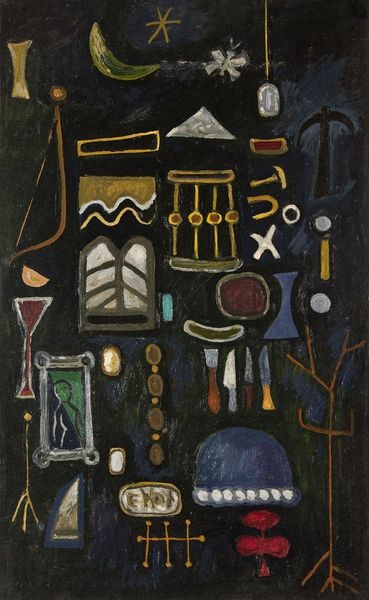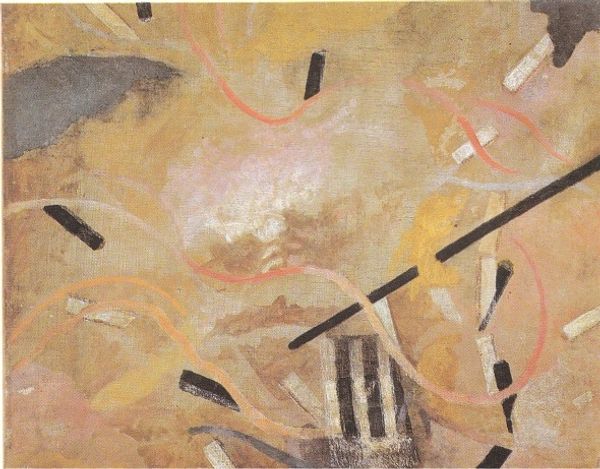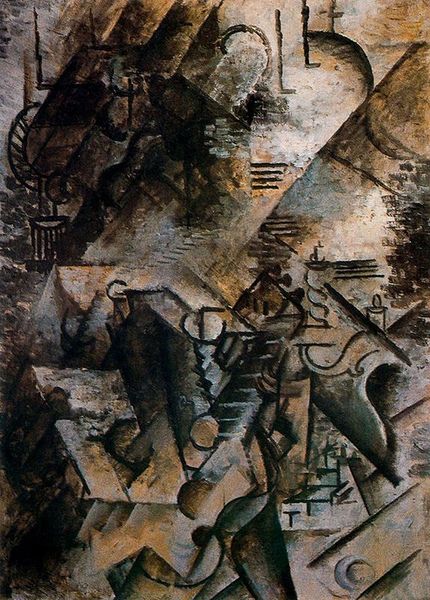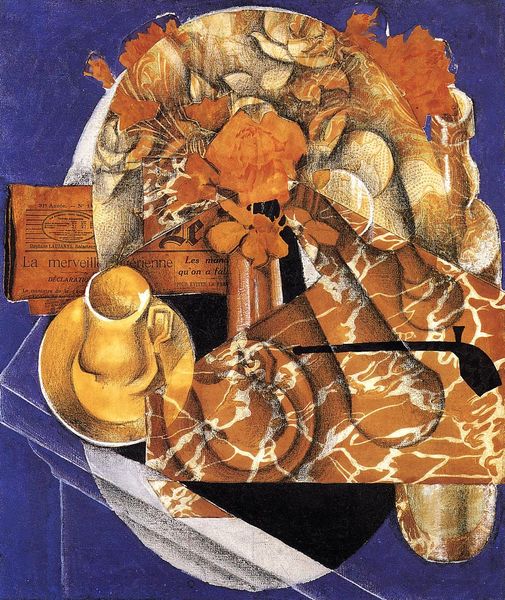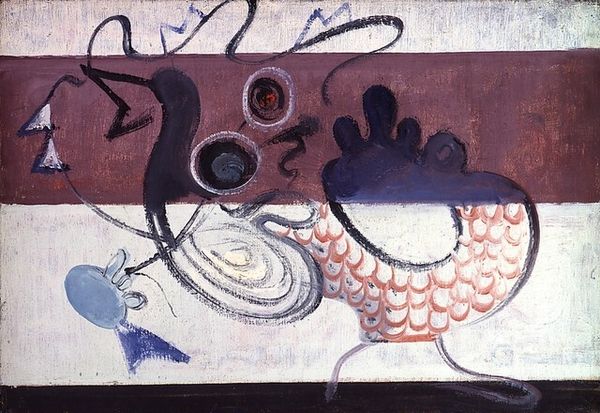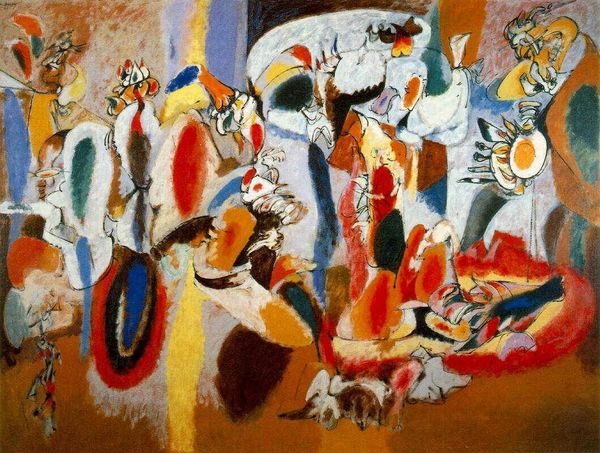
painting, oil-paint
#
portrait
#
abstract-expressionism
#
abstract painting
#
painting
#
oil-paint
#
figuration
#
abstraction
#
painting art
Copyright: Mark Rothko,Fair Use
Curator: Here we have a work by Mark Rothko, made in 1942, simply titled "Untitled." It’s oil on canvas, currently residing at the Guggenheim in New York. What’s your immediate reaction to it? Editor: A chaotic construction! A really raw kind of feeling, looking at how the various motifs have been put together almost haphazardly, while a figure can still be identified, with these vivid colors against a backdrop that feels unfinished. The layering gives the whole painting depth in a peculiar way, and it kind of reflects his shift into the color field paintings he’s known for. Curator: Absolutely. It is indicative of the shift Rothko underwent from figurative work to total abstraction. Here you can see him wrestling with figuration while dissolving recognizable forms. One could argue it mirrors the social upheaval of the time; elements breaking apart during the war. Editor: It’s interesting you mention that context. I am especially drawn to his use of materials here, how he employs them to evoke primitive or ancient techniques while still retaining a decidedly modern character. Curator: He, like many artists of his generation, was exploring myth, the unconscious, ancient cultures. Consider the formal structure reminiscent of ancient friezes or totemic arrangements. This period also aligns with his engagement with surrealist ideas and automatism. Editor: Those mythic references read also in a more fundamental, materialist way. He doesn't hide the construction, the bare support shows through at times. There’s a clear engagement with the materiality of the oil paint and the canvas itself. This becomes key as Rothko progresses; a movement away from representation to emphasizing the visceral impact of pure color and texture, which challenges established hierarchies within the art world. Curator: The very fact that he calls it “Untitled” says something about a resistance against specific interpretations, opening it to universal emotional states that, arguably, can move us, as humans, across different social divides. It offers viewers room to forge their connections with it. Editor: Yes, ultimately he transforms everyday materials into objects that resonate deeply. His process itself is an act of transforming ordinary substances into vehicles for human emotions. Curator: Well, on that evocative note, perhaps we can leave our listeners to ponder on that transformation and consider Rothko’s place within the tumultuous art landscape of the mid-20th century. Editor: And think about how a dab of oil on a simple weave of fiber might express something profound and essentially human.
Comments
No comments
Be the first to comment and join the conversation on the ultimate creative platform.

